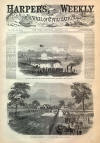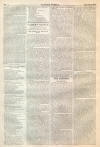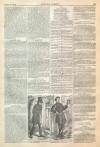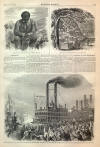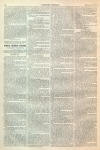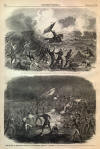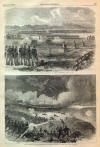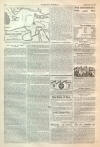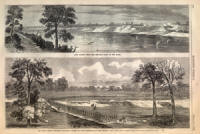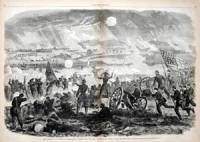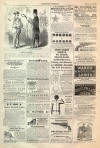Gettysburg Battle Description
|
|
This Site:
|
HARPER'S WEEKLY. [AUGUST 8, 1863. 510 THE HARBOR OF CHARLESTON, SHOWING THE SCENE OF GENERAL GILMORE'S OPERATIONS ON MORRIS ISLAND.THE ATTACK ON FORT WAGNER.WE publish on page 509 an illustration of the unsuccessful attempt of General Gilmore's army to storm Fort Wagner, on Morris Island, on 18th ult. The bombardment of the fort by the iron-clads and our laud-batteries on Morris Island commenced at noon that day, and lasted till the evening. The Tribune correspondent thus relates what then occurred: "Something must be done, and that, too, quickly, or in a few days we shall have the whole army in Virginia upon us," said an officer high in command. "We must storm the fort to-night, and carry it at the point of the bayonet." In a few moments signals are made from the top of the look-out, and soon generals and colonels commanding divisions and brigades were seen galloping to the head-quarters of the commanding general. A few words in consultation, and Generals Seymour, Strong, Stevenson, and Colonels Putnam and Montgomery are seen hastening back to their respective commands. Officers shout, bugles sound, the word of command is given, and soon the soldiers around, upon, and under the sand-hills of Morris Island spring from their hiding-places, fall into line, march to the beach, are organized into new brigades, and in solid column stand ready to move to the deadly assault. Not in widely-extended battle line, with cavalry and artillery at supporting distances, but in solid regimental column, on the hard ocean beach, for half a mile before reaching the fort, in plain sight of the enemy, did these three brigades move to their appointed work. General Strong, who has so frequently since his arrival in this Department braved death in its many forms of attack, was assigned to the command of the 1st Brigade. Colonel Putnam, of the 7th New Hampshire, who, al-though of the regular army, and considered one of the best officers in the Department, had never led his men into battle nor been under fire, took command of the 2d, and General Stevenson the 3d, constituting the reserve. The 54th Massachusetts (colored regiment), Colonel Shaw, was the advanced regiment in the 1st Brigade, and the 2d South Carolina (negro), Colonel Montgomery, was the last regiment of the reserve. These brigades, as I have remarked before, were formed for this express duty. Many of the regiments had never seen their brigade commanders before; some of them had never been under fire; and, with exception of three regiments in the 1st Brigade, none of them had ever been engaged in this form of attack. All had fresh in their memories the severe repulse we had met on the morning of the 11th inst. For two years the Department of the South had been in existence, and until the storming of the batteries on the south end of Morris Island, the army had won no victory fairly acknowledged by the enemy. Just as darkness began to close in upon the scene of the afternoon and the evening, General Strong rode to the front and ordered his brigade, consisting of the 54th Massachusetts, Colonel Shaw (colored regiment); the 6th Connecticut, Colonel Chatfield; the 48th New York, Colonel Barton; the 3d New Hampshire, Colonel Jackson; the 76th Pennsylvania, and the 9th Maine, Colonel Emery, to advance to the assault. At the instant the line was seen slowly advancing in the dusk toward the fort, and before a double-quick had been ordered, a tremendous fire from the barbette guns on Fort Sumter, from the batteries on Cummings' Point, and from all the guns on Fort Wagner, opened upon it. The guns from Wagner swept the beach, and those from Sumter and Cummings' Point enfiladed it on the left. In the midst of this terrible shower of shot and shell they pushed their way, reached the fort, portions of the 54th Massachusetts, the 6th Connecticut, and the 48th New York, dashed through the ditches, gained the parapet, and engaged in a hand-to-hand fight with the enemy, and for nearly half an hour held their ground, and did not fall back until nearly every commissioned officer was shot down. As on the morning of the assault of the 11th inst., these brave men were exposed to a most galling fire of grape and canister, from howitzers, raking the ditches from the bastions of the fort, from hand-grenades, and from almost every other modern implement of warfare. The rebels fought with the utmost desperation, and so did the larger portion of General Strong's brigade, as long as there was an officer to command it. When the brigade made the assault General Strong gallantly rode at its head. When it fell back, broken, torn, and bleeding, Major Plimpton of the 3d New Hampshire was the highest commissioned officer to command it. General Strong, Colonel Shaw, Colonel Chatfield, Colonel Barton, Colonel Green, Colonel Jackson, all had fallen. The 54th Massachusetts (negro), whom Copperhead officers would have called cowardly if they had stormed and carried the gates of hell, went boldly into battle, for the second time, commanded by their brave Colonel, but came out of it led by no higher officer than the boy, Lieutenant Higginson. The 1st Brigade, under the lead of General Strong, failed to take the fort. It was now the turn of Colonel Putnam, commanding the 2d Brigade, composed of the 7th New Hampshire, the 62d Ohio, Colonel Steele, the 67th Ohio, Colonel Vorhees, and the 100th New York, Colonel Danely, to make the attempt. But, alas! the task was too much for him. Through the same terrible fire he led his men to, over, and into the fort, and for an hour held one-half of it, fighting every moment of that time with the utmost desperation, and, as with the 1st Brigade, it was not until he himself fell killed, and nearly all his officers wounded, and no reinforcements arriving, that his men fell back, and the rebel shout and cheer of victory was heard above the roar of Sumter and the guns from Cummings' Point. In this second assault by Colonel Putnam's brigade, Colonel Turner, of General Gilmore's staff, stood at the side of Colonel Putnam when he fell, and with his voice and sword urged on the thinned ranks to the final charge. But it was too late. The 3d brigade, General Stevenson's, was not on hand. It was madness for the 2d to remain longer under so deadly a fire, and the thought of surrendering in a body to the enemy could not for a moment lie entertained. To fight their way back to the intrenchments was all that could be done, and in this retreat many a poor fellow fell, never to rise again. Without a doubt, many of our men fell from our own fire. The darkness was so intense, the roar of artillery so loud, the flight of grape and canister shot so rapid and destructive, that it was absolutely impossible to preserve order in the ranks of individual companies, to may nothing of the regiments. More than half the time we were in the fort the fight was simply a hand-to-hand one, as the wounds received by many clearly indicate. Some have sword-thrusts, some are hacked on the head, some are stabbed with bayonets, and a few were knocked down with the butt-end of musket, but recovered in time to get away with swollen heads. There was terrible fighting to get into the fort, and terrible fighting to get out of it. The cowardly stood no better chance for their lives than the fearless. Even if they surrendered, the shell of Sumter were thickly falling around them in the darkness, and, as prisoners, they could not be safe until victory, decisive and unquestioned, rested with one or the other belligerent. The battle is over; it is midnight; the ocean beach is crowded with the dead, the dying, and the wounded. It is with difficulty you can urge your horse through to Light-house Inlet. Faint lights are glimmering iii the sand-holes and rifle-pits to the right as you pass down the beach. In these holes many a poor wounded and bleeding soldier has laid down to his last sleep. Friends are bending over them to stanch their wounds, or bind up their shattered limbs; but the deathly glare from sunken eyes tells that their kind services are all in vain. THE BATTLE OF GETTYSBURG.WE publish in this number three more illustrations of the Battle of Gettysburg. The one on pages 504 and 505 shows us LONGSTREET'S GRAND ATTACK UPON OUR LEFT CENTRE, from a sketch by Mr. A. R. Waud. This battle was fully described in our last number, and we extract that portion of the account which refers to Longstreet's attack: After much solicitation from his subordinates, General Lee permitted General Longstreet to send his grand division on a charge upon the cemetery. The Federal soldiers were on the alert. They were hid behind their embankments, some kneeling, and some flat on the ground. The Confederate artillery opened. It was as fierce a cannonade as the one the day before, but instead of being spread all over the line, every shell was thrown at the cemetery. Experienced soldiers soon divined what was coming, and in every portion of the Federal line the cannon were directed toward the valley in front of the cemetery. All were ready. Amidst the furious fire from the Confederate cannon scarcely a Federal shot was heard. The artillerists, implements in hand, crouched in the little ditches dug behind their cannon. With arms loaded, the infantry awaited the charge. It soon came. From the woods of short, scrubby timber and the rocks near the seminary there rose a yell. It was a long, loud, unremitting, hideous screech from thousands of voices. At the yell the Federal cannon opened. Soon the enemy's columns emerged front the woods. They came on a rush down the hill, waving their arms and still screeching. They climbed the fences and rushed along, each one bent upon getting first into the cemetery. The cannon roared, and grape and canister and spherical case fell thick among them. Still they rushed onward, hundreds falling out of the line. They came within musket-shot of the Federal troops. Then the small-arms began to rattle. The Confederates approached the outer line of works. They were laboring up the hill. As they mounted the low bank in front of the rifle-pits, the Federal soldiers retreated out of the ditch behind, turning and firing as they went along. It was a hand-to-hand conflict. Every man fought by himself and for himself. Myriads of the enemy pushed forward down the hill, across into the works, and up to the cemetery. All were shouting, and screaming, and swearing, clashing their arms and firing their pieces. The enemy's shells flew over the field upon the Federal artillerists on the hills above. These, almost disregarding the storm which raged around them, directed all their fire upon the surging columns of the enemy's charge. Every available cannon on the Cemetery Hill, and to the right and left, threw its shells and shot in the valley. The fight was terrible; but despite every effort the enemy pushed up the hill and across the second line of works. The fire became hotter. The fight swayed back and-forth. One moment the enemy would be at the railings of the cemetery; then a rush from the Federal side would drive them down into the valley. Then, with one of their horrid screeches, they would fiercely run up the hill again into the cemetery, and have a fierce battle among the tombstones. It was the hardest fight of the day, and hundreds were slain there. Reckless daring, however, will not always succeed. Several attempts were made to take the place, but they were not successful; and late in the afternoon, leaving dead and wounded behind them, the enemy's forces slowly retreated upon their own hill and into their woods again. Another illustration on page 508, also from a sketch by Mr. Waud, shows us an ATTACK OF THE LOUISIANA TIGERS UPON A BATTERY OF THE ELEVENTH CORPS. The Tigers made the attack as fiercely as usual, but our men stood their ground stoutly, and repulsed them with a heavy loss in killed, wounded, and prisoners. Our third illustration, on page 508, exhibits the GALLANT CHARGE OF CRAWFORD'S DIVISION, to which in great part the success of the day was due. An eye-witness writes: "You have no doubt heard of the gallant charge made by the division under Crawford's command. It contributed very materially to saving the left of our line in that fearful struggle. The enemy had massed his troops on Crawford's left. The Third Corps (Sickles's) had been engaging him, but were overpowered; several guns had been lost. Two divisions of the Fifth Corps (Sykes's) had been also engaged; but nothing could withstand the pressure of the enemy, and these troops gave way. Several thousand arms had been lost. On came the enemy in a dark mass, across the wheat-field, over the stone-wall, and across the ravine. At this moment, while the fugitives were rushing through Crawford's ranks, he ordered a charge. He was drawn up in line of battle, and in column of division. His men, with loud cheers, rushed forward. Crawford himself rode to the front, and, seizing the flag of the leading regiment, encouraged the men. They dashed in; volley after volley was poured into the enemy's ranks. The 'Bucktails' got ahead, and drove the enemy back across the ravine, over the stone-wall, and through the wheat-field, retaking our ground and an immense quantity of arms. "The left of our position was saved by this charge, and we remained masters of the field." The General Crawford who led this gallant and most efficient manoeuvre is well known throughout the country as the surgeon of the garrison of Fort Sumter under Major Anderson. EXECUTION OF DESERTERS.THE first execution for desertion that has yet taken place in the Twelfth Corps, and we think the first in the Army of the Potomac, took place near Leesburg, Virginia, on Friday, June 19. We publish an engraving of the scene on page 509. On that day, a little after noon, the Corps was formed in three sides of a square, with the fourth side occupied by three open graves, and three empty coffins, seated upon which, bound hand and foot and blindfolded, were the three unfortunate men who were to suffer the penalty of violated military law. The condemned, William McKee and William Groover, of the Forty-sixth Pennsylvania regiment, and Christopher Krumbar, of the Thirteenth New Jersey regiment—all belonged to the First Division; and the painful duty of conducting the execution therefore devolved upon Captain M. P. Whitney, of the Fifth Connecticut Volunteers, the Provost-Marshal of the Division, to whom great praise is awarded for the quiet and orderly manner in which the affair passed off. A squad of eight men were placed at a distance of about three rods from each of the condemned, and a reserve was in readiness, should the first fire not prove fatal; but at the single volley the whole three dropped at once lifeless upon their coffins, into which the bodies were then placed, and after the Corps had been marched in column past them, buried on the spot. ADVERTISEMENTS.French (Soltaire) Patterns. These fashionable goods are made of the finest Ivory, and brought to a high polish of all colors, Black, White, Red, Blue, &c., and engraved with Initial Letters, Old English, &c. Complete sets $1.50, free by mail. Trade supplied. JOHN F. PHELPS, 429 Broadway, New York. The Unity of Man,And The Unity of Language—The Law of Development —Nations, like Individuals—Latitude and Longitude, The Barbarian, Mythology—The Pyramids, Ancient Rome, War and Progress. THE AMERICAN MAN; Contrasted with the English, Scotch, Irish, French, etc.—The Secret of Longevity—The Perils of Life—How life is shortened—and how prolonged. PHYSIOLOGY IN THE PULPIT—Soul and Body—Their reciprocal relations—The propensities—Dyspepsia—The true life. CIRCULATION OF THE BLOOD—A new Theory—Light, heat, attraction—Climate and Character—Swimming, etc., in the August No. PHRENOLOGICAL JOURNAL. 15 cents, $1.50 a year. FOWLER & WELLS, 308 Broadway, N. Y., and all news men. Portable Printing Offices.For sale by the ADAMS PRESS CO., 31 Park Row, New York. Circulars sent free. Specimen Sheets of Type, Cuts, &c., 6 cents. BARTLETT supplies the NEEDLES for all SEWING MACHINES. Sends by Mail or Express everywhere. Also the renowned BURNISHED HAND NEEDLES, 150 for 25 cents. 442 Broadway, N. Y. "Romola" is a performance of which no other woman of genius among us would have been capable than precisely Geroge Eliot.—The Reader (London). There are noble things to be found in "Romola," which will make the reader's heart burn within him. It will be scarcely possible to rise from the perusal without being penetrated by the "joy of elevated thoughts," without feeling a desire to cease from a life of self-pleasing, and to embody in action that sense of obligation, of obedience to duty, which is, indeed, the crowning distinction that has been conferred on man, the high gift in which all others culminate. This is high praise; and a work that can produce this effect, if only on a single reader, has not been written in vain.—The Athenaeum (London). Such an intellectual study, to use an artist's phrase, as "Tito Melema," has not been placed before the world in this generation; and we know not which to wonder at most, the accuracy of the anatomical knowledge displayed, or the art with which that knowledge is infused— FOR BRIDGEPORT.From Pier 26 East River (Peck Slip Ferry Dock).—The Steamer BRIDGEPORT, Captain WEEKS, will leave New York every day at 12 o'clock noon (Sundays excepted), arriving in Bridgeport in time to connect with the Housatonic, Naugatuck, New Haven and Hartford Railroads; also the Shore Line to Saybrook and New London. Returning, leave Bridgeport every night at 11 o'clock. Freight taken to all stations on the Naugatuck and Housatonic Railroads. For information, inquire at the office on the Wharf, or 105 Beekman Street GEO. W. CO LIES, Agent. MUSQUITO ALL NETS.MUSQUITO NEW NETS.MUSQUITO KINDS NETS.MUSQUITO of NETS.MUSQUITO PATENT SHIELDS.MUSQUITO CANOPIES SHIELDS.MUSQUITO SHIELDS.Lace At Kelly's Curtains. LACE No. 359 Broadway. CURTAINS. LACE CURTAINS. Holland & Gold Window Shades HOLLAND and GOLD WINDOW SHADES. HOLLAND and GOLD WINDOW SHADES. $75 A MONTH! I want to hire Agents in every county at $75 a month, expenses paid, to sell my new cheap Family Sewing Machines. Address, S. MADISON, Alfred, Maine. A PRINTING OFFICE FOR $22. Every Man his own Printer. THE LOWE IMPROVED PRINTING PRESSES are the best and cheapest portable Card and Job Presses ever invented, and have been awarded Silver Medals and Diplomas. Merchants. Druggists, and others, are saving or MAKING MONEY by using them. Cards, Bill-Heads, Circulars, Labels, &c., can be printed at a trifling expense. Price of Presses: $7, 12, 18, and $25. Price of an Office, with Press, $12, 22, 32, and $43. Send for a Circular to the LOWE PRESS CO., 13 Water Street, Boston. Facts for Soldiers!—Throughout the Indian and Crimean Campaigns, the only medicines which proved themselves able to cure the worst cases of Dysentery, Scurvy, and Fever, were HOLLOWAY'S PILLS AND OINTMENT. Therefore let every Volunteer see that he is supplied with them. Only 25 cents per pot or box. To Conscripts.—BUY the New Song, "HOW ARE YOU, CONSCRIPT." Price 25 cents. For sale at all Music Stores, or mailed, post-paid, on receipt of the price, by HENRY TOLMAN & CO., 291 Washington St., Boston. A Rare Chance! The "PRINTER'S DEVIL," a first-class Literay Journal, will be sent on trial six months, free of postage, for TWENTY-FIVE CENTS. Address, "Editor Printer's Devil, Box 2900, New York."
HARPER & BROTHERS
KINGLAKE'S CRIMEAN WAR. The Invasion of the Crimea: its Origin, and an Account of its Progress down to the Death of Lord Raglan. By ALEXANDER WILLIAM KINGLAKE, With Maps and Plans. Vol. 1., 12mo, Cloth, $1.50. AFRICAN HUNTING FROM NATAL TO THE ZAMBESI, including Lake Ngami, the Kalahari Desert, &c., from. 1852 to 1860. By WILLIAM CHARLES BALDWIN, F.R.G.S. With Map, Fifty Illustrations by Wolf and Zwecker, and a Portrait of the Great Sportsman. Small 8vo, Cloth, $1.5 BARRINGTON. A Novel. By CHARLES LEVER, Author of "Charles O'Malley," "Gerald Fitzgerald," "One of Them," "The Martins of Cro' Martin," "Maurice Tiernay," "The Dodd Family Abroad," &c., &c., &c. 8vo, Paper, 50 cents. A DARK NIGHT'S WORK. A Tale. By Mrs. GASKELL, Author of "Sylvia's Lovers," "Mary Barton," &c. 8vo, Paper, 25 cents. HARASZTHY'S GRAPH CULTURE AND WINE-MAKING, &c. Grape Culture and Wine-Making: being the Official Report of the Commissioner appointed to investigate the Agriculture of Europe, with especial Reference to the Products of California. By A. HARASZTHY. With numerous illustrations. 8vi, Cloth, $5.00. there is no other fitting word—into the reader's mind. Shakespeare might have exulted in Tito. — Spectator (London). EQUAL TO SCOTT.—George Eliot has Sir Walter Scott's art for revivifying the past, but not Scott's dynamical force in making you plunge into it with as headlong an interest as into the present. For this she compensates by a deeper and wider intellectual grasp. ** It is marvelous that the wide and calm imaginative power of the writer should have produced a work which is likely to he permanently identified with English literature, in which Italy and England may feel a common pride. ** The great and concentrated interest of the book—at least after the wonderful development of Tito's character—is the portrait of Savonarola, which it is almost impossible not to feel as faithful as history as it is great as romance. ** His portrait evinces almost as great a graphic power, and far more scrupulous care, than Sir Waller Scott used in those pictures of the various Sferwarts.—London Spectator. Just Ready. Price, $1.25 Paper; $1.50 Cloth. Romola. A Novel. By the Author of "Adam Bede," &c. With Numerous Illustrations. 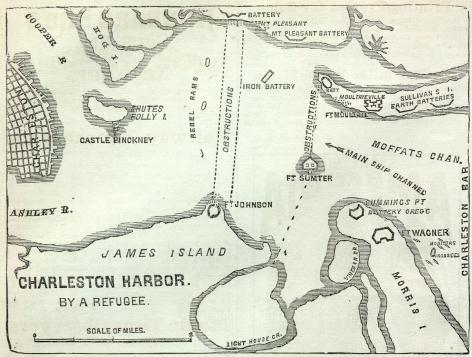   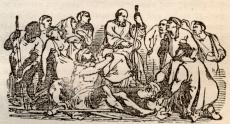 |
||||||||||||||||||||||
|
|
||
|
|
Site Copyright 2003-2018 Son of the South. For Questions or comments about this collection, contact paul@sonofthesouth.net |
|
|
Are you Scared and Confused? Read My Snake Story, a story of hope and encouragement, to help you face your fears. |
||
